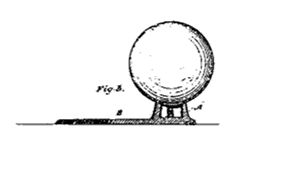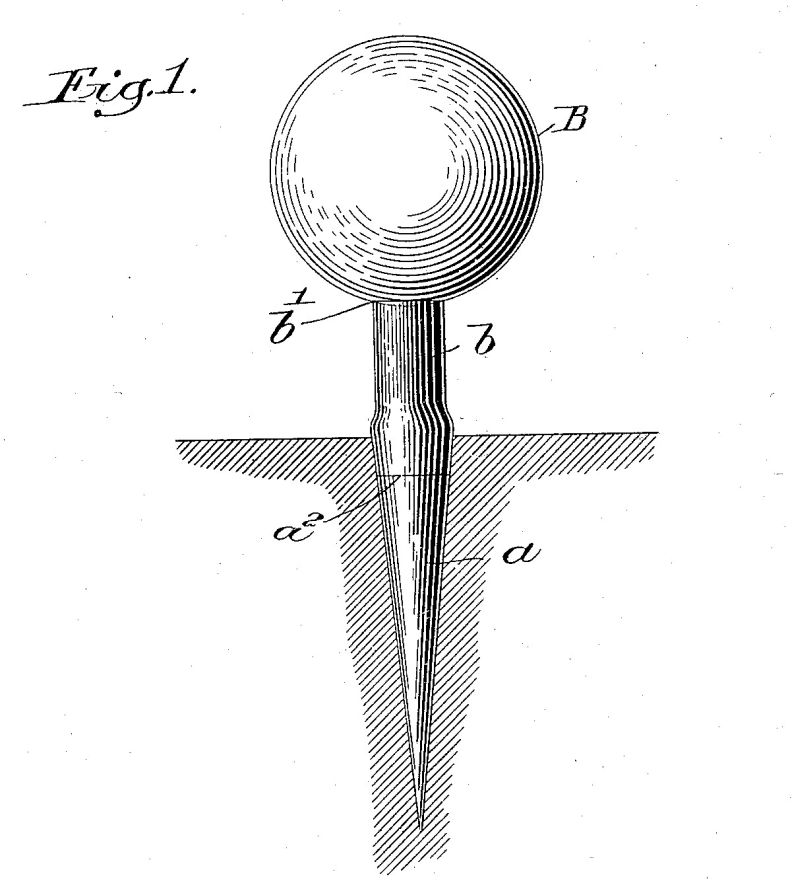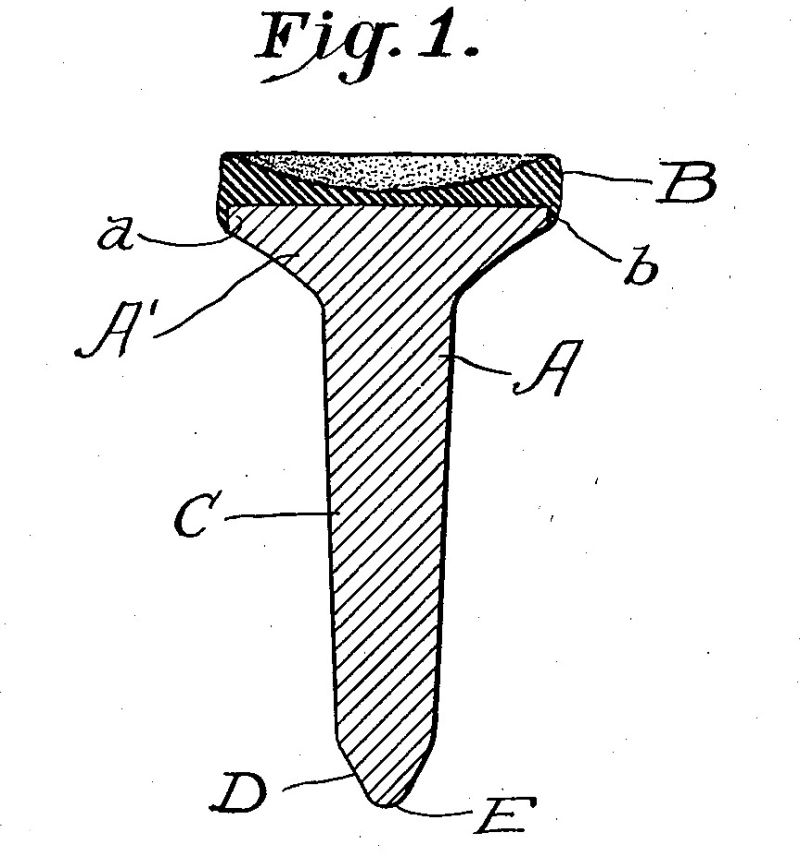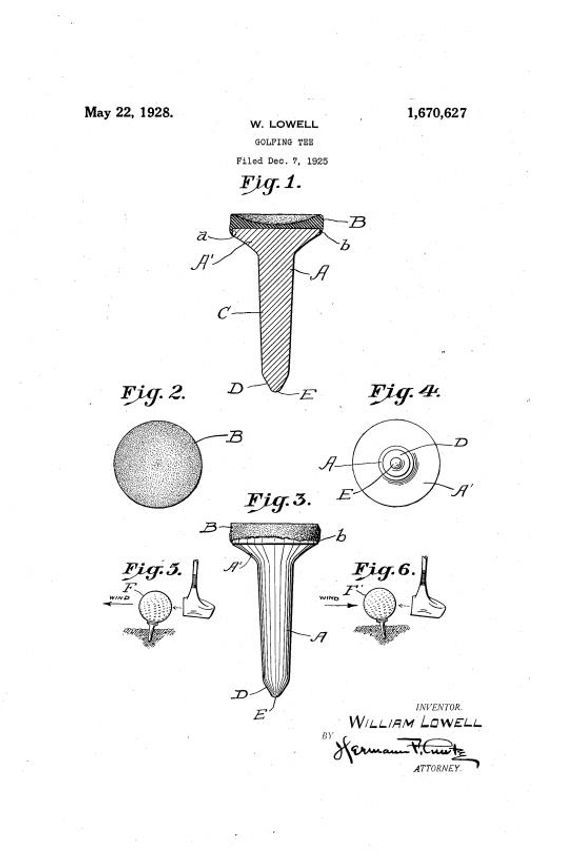Golf is high-tech these days. Club design, swing analysis, ball construction, and even course maintenance all integrate the latest technological advances. As a result, it is easy to overlook that one of the most profound and lasting impacts on the sport came from a low-tech invention: the golf tee.
Tee it Up
Golf is an old game, dating back to the 15th century in Scotland. Originally, players would scoop up a small mound of dirt or sand and balance the ball on top before before taking their first swing. This was not only messy and time consuming, but also inconsistent, as the height and stability of the mound could vary greatly, affecting the quality of the shot.
In the late 1800s, golfers began experimenting with different portable, manufactured tee designs. Among the first was a design by two Scots that used a rubber plate with upright prongs and rested on top of the ground:

Peg-shaped tee designs quickly followed. Such tees could be pushed into the ground, and thus didn't fly away when hit. Early peg-shaped tees included the design below, which was invented in 1899 by Dr. George Grant, the first black graduate of Harvard's dental school. Dr. Grant's tee used a flexible, rubber head attached to a rigid, wooden base that tapered to a point for inserting into the ground.

William Lowell's Golfing Tee
Enter William Lowell, another dentist and an avid golfer. In 1925, Lowell filed the attached U.S. Patent No. 1,670,627 for a "Golfing Tee" intended "to entirely displace the use of molding damp sand by hand to form a small mound to support a golf ball." Lowell's tee, shown below, included a head B made of gutta percha (a plastic used as a filling for root canals) secured to a wooden body A. The head's upper side was formed into a recess "with a peripheral rim adapted to give a support for a golf ball of sufficient extent to hold the ball steady."

Lowell described an object of his invention as producing a tee "so cheaply made that it could be discarded, or could be reused if desired." Another benefit of his tee was that it wouldn't distract the golfer (golf is difficult enough):
I have found that [the tee] is entirely invisible from the view point of the player when addressing the ball, and therefore appears to hold the ball in air without any visual diversion of the player in the usual practice of aiming and driving in the play of the game. As the shank supporting the tee head is greatly restricted compared with the diameter of the supporting head, all of the tee as an article is invisible to the player at the time that his playing senses are concentrated on the aim and strength of his stroke.
Promoting the "Reddy Tee"
Much of the success of Lowell's tee was due to his marketing prowess. Lowell branded his tee the "Reddy Tee" and painted them red. (He tried green at first, but green tees got lost in the grass.) Decades before Nike signed with Tiger Woods, Lowell enlisted Walter Hagen to promote his tees. Hagen, a charismatic and influential figure in the sport, gave the Reddy Tee credibility and visibility (he'd leave the tees behind on the tee box for kids to pick up as souvenirs), helping to drive its adoption among both amateur and professional golfers.
Soon, the modern golf tee became a staple in golf bags worldwide. Today, the concept of the golf tee is so ingrained in the sport that it is hard to imagine a time without it.
The content of this article is intended to provide a general guide to the subject matter. Specialist advice should be sought about your specific circumstances.



